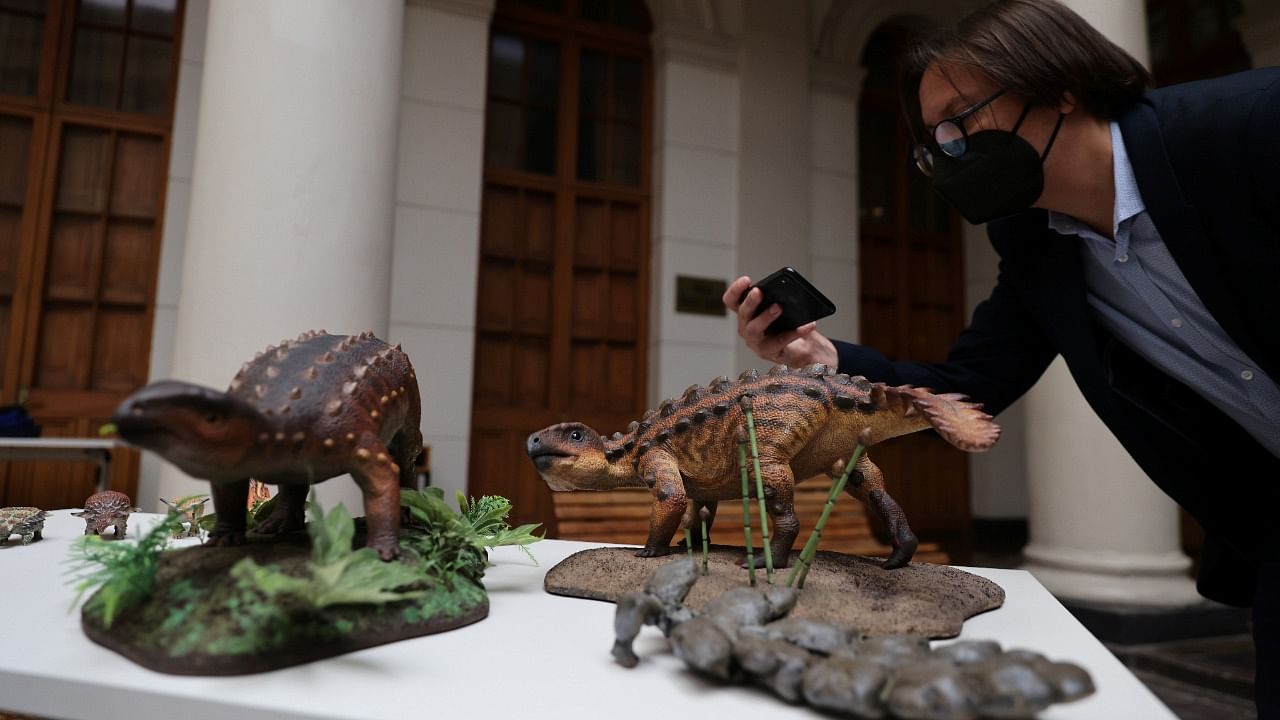
It’s not every day you find a dinosaur that defended itself from predators with a completely unique weapon.
In a study published Wednesday in Nature, Chilean researchers announced the discovery of a new species of ankylosaur, a family of dinosaurs known for their heavy armour, from subantarctic Chile. The animal, which they named Stegouros elengassen, offers new clues about where these tank-like dinosaurs came from — and features a bizarre, bony tail shaped like a club that was wielded by Aztec warriors.
“It’s lacking most of the traits we’d expect from an ankylosaur and has a completely different tail weapon which shows there’s something very idiosyncratic happening here in South America,” said Alexander Vargas, a professor at the University of Chile and a co-author on the study.
A diverse collection of ankylosaurs once roamed in great numbers across Laurasia — the northern supercontinent that once contained North America and Asia. Even in a group of animals famous for its inventive approach to defence, the ankylosaur family stands out. Splitting from their closest relatives, the stegosaurs, in the mid-Jurassic, ankylosaurs developed hides covered in bone deposits called osteoderms, which formed lattices of tooth-breaking armour. The most famous species of ankylosaur evolved shin-shattering tail clubs like the maces of ancient warriors.
But their relatives from the southern continent of Gondwana — now South America and Antarctica — are less well studied, Vargas said. Since these are believed to include the earliest members of the group, the origins and early evolution of the family has been an enduring mystery.
In February 2018, a team of palaeontologists from the University of Texas stumbled across a set of bones in the frigid, wind-blasted valley of Río Las Chinas, in the far south of Chile. Despite its forbidding nature, the site is a beacon for palaeontologists: Vargas has spent the past decade working there with researchers including Marcelo Leppe from the Chilean Antarctic Institute, dating rocks and looking for fossil hot spots.
There were only five days left in the field season when the Texas palaeontologists alerted Vargas and Leppe to the find. Working at night under very cold conditions, they hauled the block of fossils downhill to the campsite. One person sprained an ankle and another broke a rib. Many people came close to hypothermia.
But what came out of the block was worth it. Preparation revealed an unusually complete ankylosaur: 80% of a skeleton, including a largely articulated back half, as well as vertebrae, shoulders, forelimbs and scraps of skull.
In life, Stegouros would have been about 6 feet long, with a proportionally large head, slender limbs and a strange short tail, tipped with seven pairs of flattened, bony osteoderms that form a single structure.
That tail weapon — which Vargas compared to a macuahuitl, the obsidian-studded bladed club of Mesoamerican warriors — seems to have evolved independently of other ankylosaurs. Early ankylosaurs from the north have no tail clubs, and later ones developed them through the evolution of stiffened vertebrae, forming the “handle” of the blunt tail club.
But the tail club of Stegouros is stiffened through osteoderms fusing over the vertebrae, forming the distinctive wedged shape. The fused osteoderms may have been covered in sharp sheaths of keratin, the material that covers horns and claws, said James Kirkland, state palaeontologist with the Utah Geological Survey who was not involved in the study. A blow from the tail would have been like being “whacked in the shins by a battle-axe,” he said.
Victoria Arbour, palaeontology curator at Canada’s Royal British Columbia Museum, said the tail resembled those of giant extinct armadillos called glyptodonts.
“It’s another interesting example of the evolution of bony tail weapons, which have only evolved a couple of times ever but seem to have evolved multiple times in ankylosaurs,” she said.
By crunching anatomical data, Vargas and his colleagues concluded that Stegouros was closely related to southern ankylosaurs found in Antarctica and Australia.
After the final separation of Laurasia and Gondwana in the late Jurassic, Vargas said, the two northern and southern ankylosaurs pursued different evolutionary trajectories, suggesting the possibility that an entire lineage of strange ankylosaurs in Gondwana are waiting to be discovered.
Kirkland agrees that Stegouros is closely related to Antarctica’s Antarctopelta, and suggests it may even be the same animal. But it’s possible that Gondwana hosted multiple lineages of ankylosaur, including some more closely related to northern animals.
“It’s not often that a new ‘family’ of dinosaurs is discovered,” Kirkland said. “The record of armoured dinosaurs in the Southern Hemisphere has been pretty poor, and this beast hints at what we have been missing.”
Stegosaurus also represents a breakthrough for Chilean paleontology, Vargas said. Paleontologists are discussing and debating how to make their field less dependent on North American and European institutions. The paper, led by Chilean palaeontologists and published in Nature, a top journal, was funded by Chilean grants rather than outside institutions.
“This is very rare for Chilean science,” Vargas said. “And it’s just the beginning. In terms of academic achievement, the fossil record of Chile is tremendously important.”